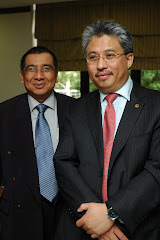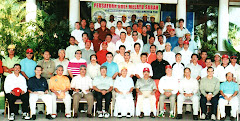*Britain suddenly announced big news about China! The whole world is silent ...*
Mingya Reading 4 days ago
Today, the circle of friends was swiped by this article!
Because, someone asked a question:
How does China produce so much food enough to feed 1.4 billion people? Is it imported or self-sufficient?
Cambridge University doctor Janus Dongye's answer is absolutely stunning!
The following is the text:
Seeing is believing. Open your Google Earth and see what is going on in China from the sky. Western media generally do not report these things.
I will show you which ones are worth paying attention to.
Include the following coordinate points:
Location 1: Ningde Port, Fujian
(119 ° 57'45.2 "east longitude, 26 ° 43'02.8" north latitude)
Our first stop is the coastal area of Fujian Province.
Zoom in a bit on the map to see millions of houses and cages floating on the sea.
From Zhejiang to Guangdong, over 1,000 miles of coastline, you can see similar cages almost everywhere.
what is that?
That is China's "seafood farm"!
Rather than going wild to catch wild seafood, it is better to keep seafood in the same place. In this way, you can raise fish, shrimp, crab, lobster, shellfish, etc. with less effort, and earn more money.
Chinese farmers are not only aquaculture, but any open water, reservoirs, rivers and lakes can raise aquatic products.
Imagine how many tens of fish or crabs are kept in each cage.
What is the consumption of seafood in China?
It is estimated that the total annual global seafood consumption is 144 million tons. China is the largest seafood consumer, accounting for 45% of the global total with 65 million tons, followed by the European Union (13 million tons), Japan (7.4 million tons) United States (7.1 million tons) and India (4.8 million tons).
China and India have similar populations, but China ’s seafood consumption is 12 times that of India—although India ’s geographic conditions are more ideal, it is located in a tropical region rich in fishery resources and surrounded by warm oceans on both sides.
Of the 65 million tons of seafood consumed annually in China, only 15 million tons are fished, and the remaining 50 million tons are from aquaculture farms. 90% of seafood in Japan comes from fishing. Thanks to seafood farming, ordinary Chinese people can buy cheap seafood, and they can afford seafood every day. Below is the reunion dinner of a typical Chinese family. You can see that many ingredients are seafood.
The price of such a seafood dinner for the whole family is only around US $ 120.
Location 2: Nanxun, Huzhou, Zhejiang
(120 ° 09'02.9 "east longitude, 30 ° 46'14.5" north latitude)
The next stop is the flood plains along the Yangtze River, Taihu Lake and Qiantang River. The abundant fresh water resources have brought a lot of nutrients in the upper reaches of the river, making this area a land of fish and rice for 100 million people. This is also one of the areas with the highest population density in China. It is more similar to the flood plains of Bangladesh, West Bengal, India, and Saigon, Vietnam.
Compared with other densely populated floodplains, what unusual things have the Chinese done?
Compared with planting rice, farming aquatic products can be sold at a higher price and get rich faster. Closer, you will see there are millions of fish ponds here. In addition to fish ponds, you can also see many trees planted around.
These trees are mulberry trees and are used to raise silkworms. For two thousand years, the Chinese in this area have developed many highly complex and sustainable agricultural ecosystems. One of the most famous is the Sanji fish pond, see the picture below:
Today, this system has developed into multiple recycling of the same land:
But to raise more fish in the fish pond, you have to have an aeration pump. It can inject air into the water, so that the fish have enough oxygen to maintain breathing. In the picture below, the white dot in the middle of each fish pond is an aeration pump.
To install an aeration pump in each fish pond, it must be energized everywhere. How to supply power to the aerator pump? Of course it is a solar panel.
As you can see from Google Maps, solar-powered fish ponds (referred to as "photovoltaic fish ponds") have begun to replace Sanchi fish ponds. Some areas of Huzhou have already installed solar panels.
The picture above shows the traditional Sanchi fish pond on the left and the photovoltaic fish pond on the right
From this point, you can understand why China can produce 84% of the world ’s silk and 66% of the freshwater fish, and solar power accounts for 25.8% of the global total. In rural areas of Zhejiang and Jiangsu, people eat fish almost every day. Some people say that this is the secret of their brains.
Another ecological cycle is lotus root and fish farming.
In some fish ponds, you can grow vegetables at the same time, the most common of which is lotus root. China ’s annual lotus root production reaches 11 million tons, accounting for 90% of the world ’s total output and 60% of the world ’s exports. Not only Chinese people love lotus roots, but South Korea, Japan and Vietnam are also big importers of lotus roots.
The third ecological cycle is mustard-bee-fish and shrimp.
The same method can also be used to grow rape.
Location 3: Duotian Town, Xinghua City, Jiangsu Province
(119 ° 51'50.4 "east longitude, 32 ° 56'51.9" north latitude)
There is no road here, you have to take a boat to travel through it. It is precisely because of this ecosystem that China has become the number one producer of rapeseed oil in the world, with production accounting for 22% of the global total.
With rapeseed, beekeeping can be achieved on a large scale. China's honey production accounts for 30% of the world's total.
In fact, 1/3 of the honey consumed in the United States comes directly or indirectly from China. In order to avoid tariffs, Chinese honey exporters first export to India, the Philippines and Malaysia, then re-label them locally to local products, and then export to the United States. Other industries have similar operations.
In addition to honey, it is also a famous hairy crab producing area in China. The price of hairy crabs can be sold to about 60 US dollars per kilogram, which can only be eaten by middle-income people.
Location 4: Shouguang City, Shandong Province
(118 ° 44'14.7 "longitude east, 36 ° 44'15.9" north latitude)
The next thing to go is the Shandong Plain.
Zooming in a bit, we can find millions of "flashing" huts on the plain. Look around, they are everywhere.
what is this?
It turned out to be a vegetable and fruit greenhouse that controls temperature and humidity.
In the greenhouse, vegetables and fruits can be cooked more than a year regardless of the season. This means that the output of vegetables and fruits is several times higher than traditional farmland.
For example, lettuce growing in a greenhouse takes 52 days from sowing to harvesting, so that seven rounds can be planted a year, which is seven times more efficient.
In addition, farmers are also required to install IoT monitoring systems in the greenhouses. Through re-education and training, farmers learned to use mobile phones to monitor the internal environmental parameters of the greenhouse, such as carbon dioxide concentration, light intensity, soil temperature and so on.
Data from the United Nations Food and Agriculture Organization show that China's vegetable production and consumption are around 700 million tons, which is 40% of the world's total. Most of the nationals of India are vegetarians, and the arable land area is larger than that of China, but the national output of vegetables and fruits is 180 million tons, and China is 3.8 times its.
With greenhouse vegetables, Chinese people enjoy more varieties of vegetables than anywhere else in the world, and the prices are even cheaper.
The output of every vegetable in China is almost the first in the world, and the gap with the second place is not small. Many East Asian-specific vegetables are not even on the list, such as leeks.















































No comments:
Post a Comment